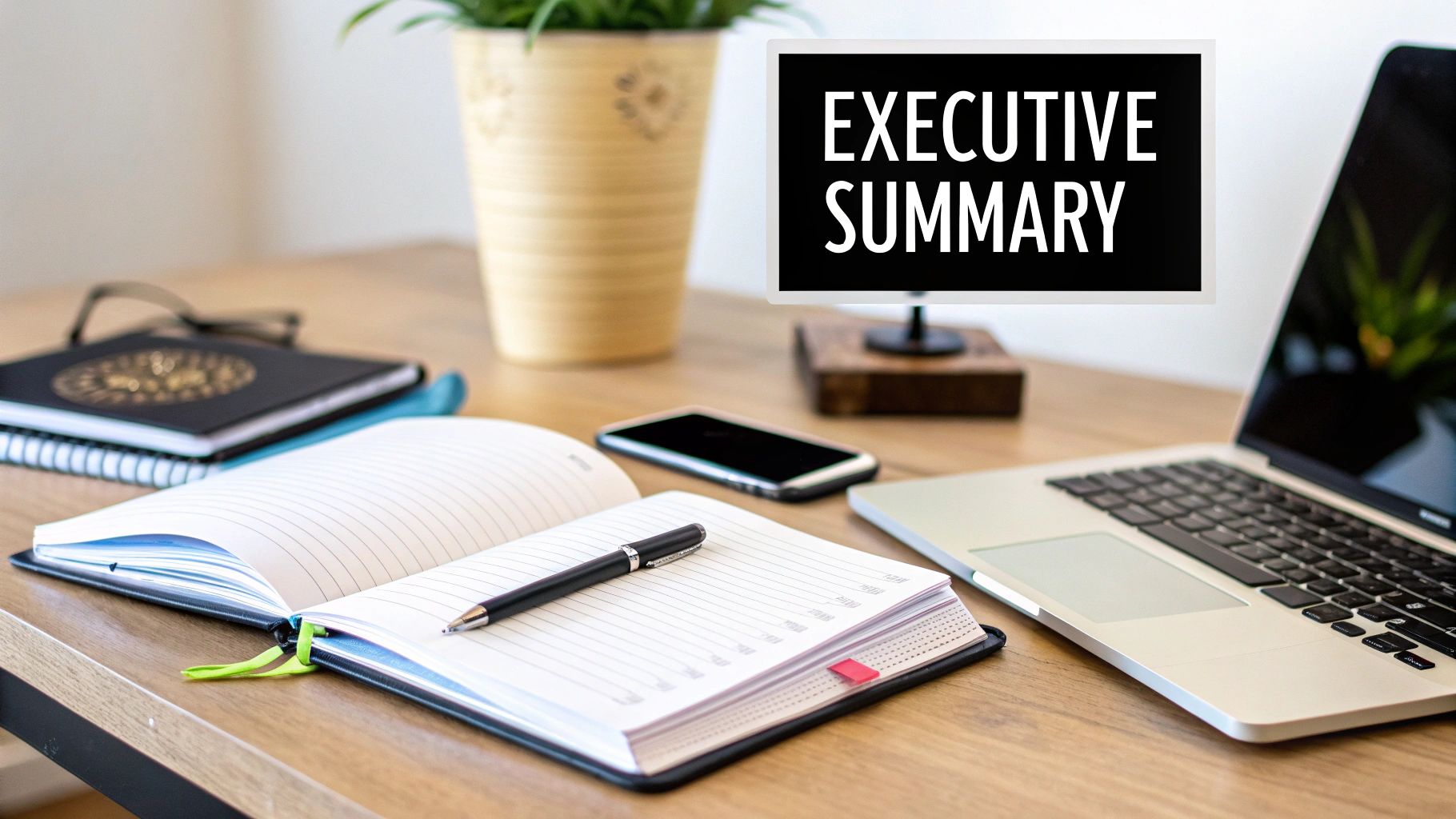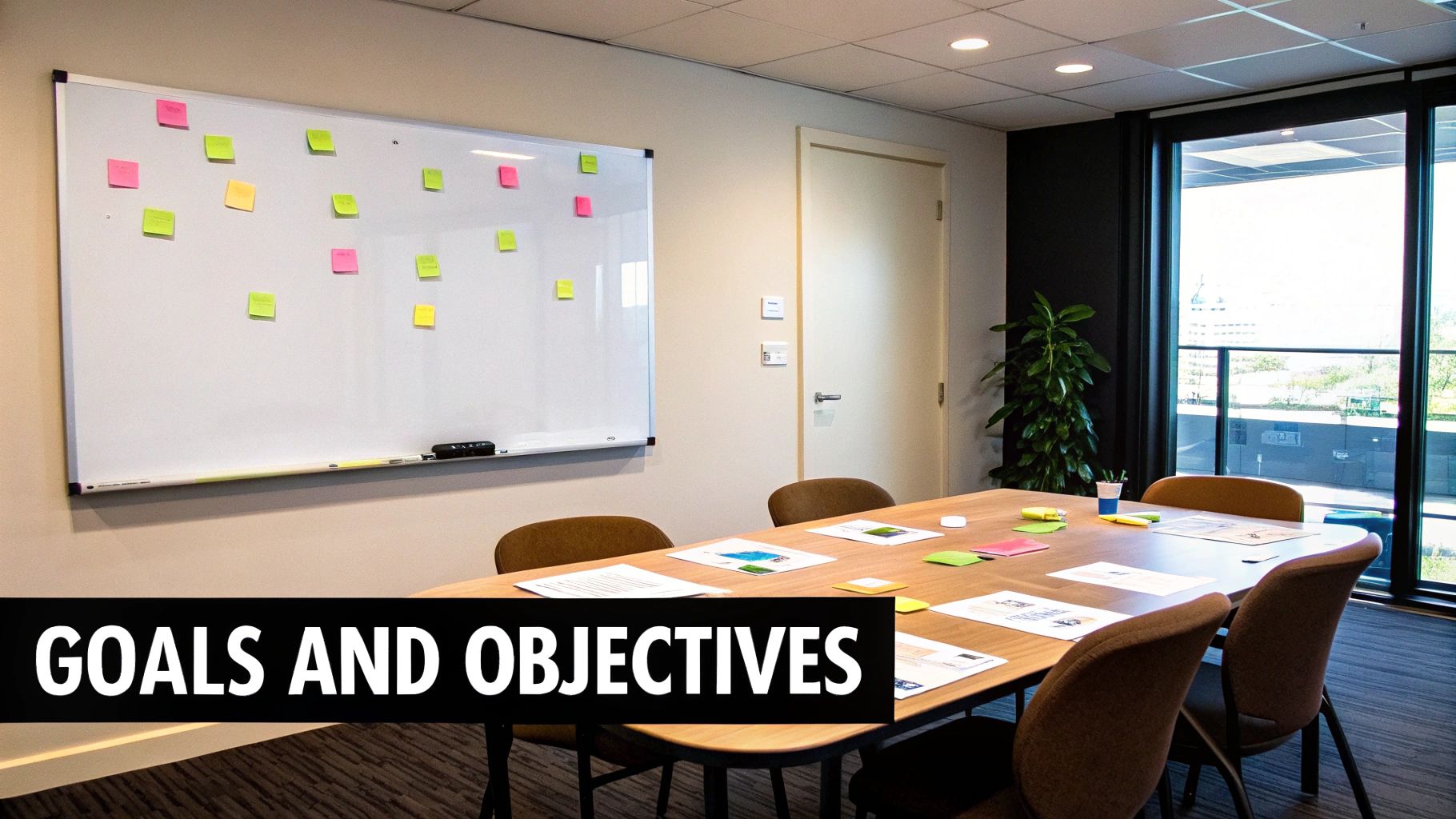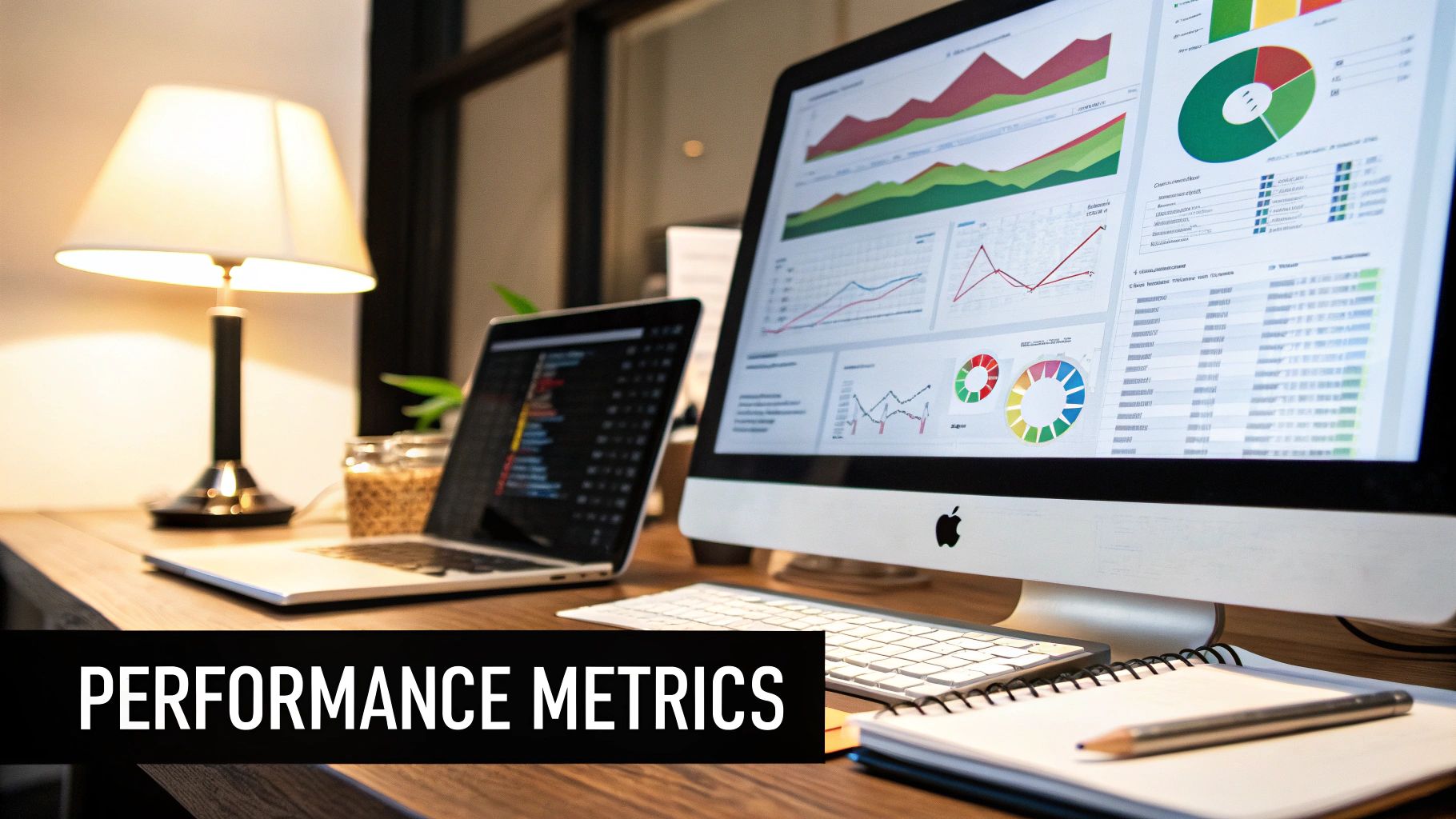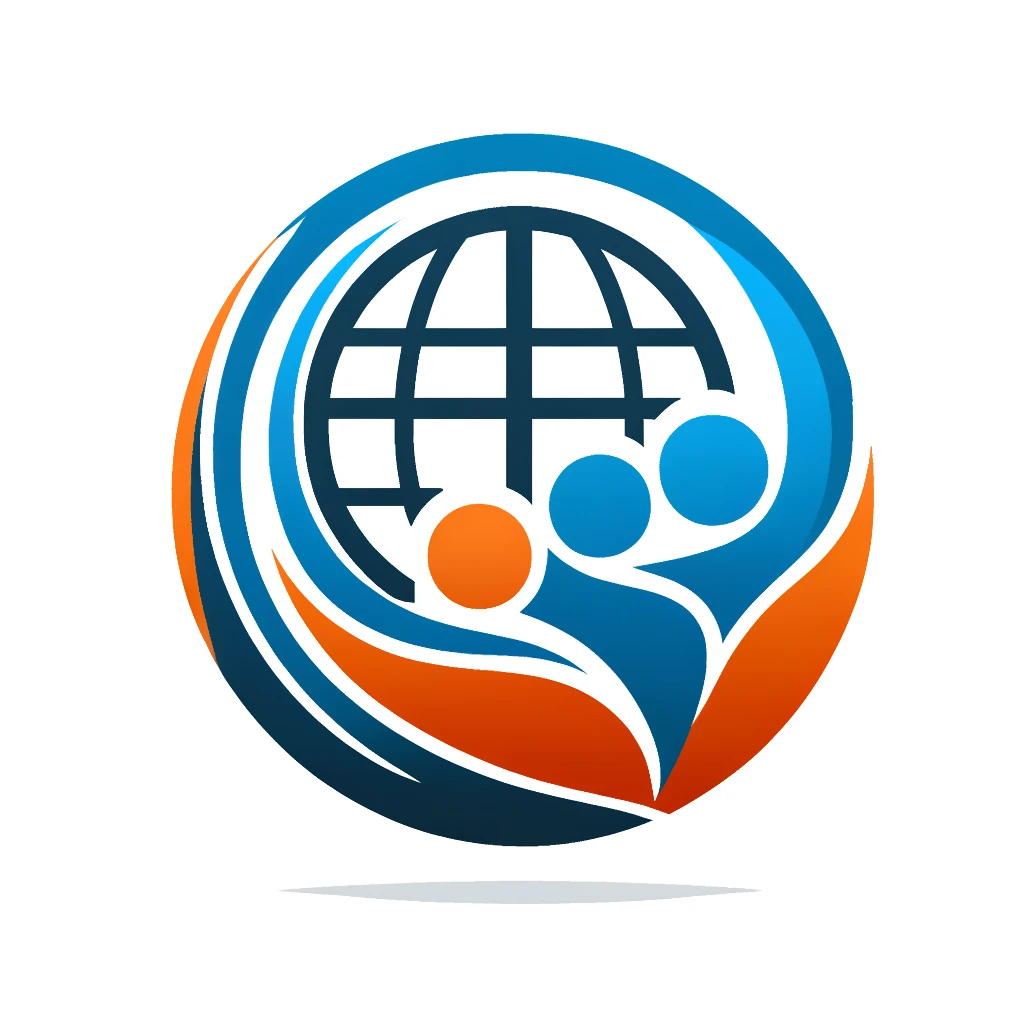Why Strategic HR Planning Is Your Competitive Advantage

Many organizations struggle to connect HR initiatives with tangible business outcomes. This often leads to HR being viewed as a cost, not a contributor. Effective strategic HR planning, however, can completely change this, turning HR into a powerful force for growth. It's about moving beyond everyday HR tasks and creating a proactive, integrated strategy.
This difference between reactive HR management and proactive HR strategy is key. Reactive HR focuses on immediate needs like filling open roles or managing payroll. Proactive HR strategy anticipates future needs and aligns with overarching business goals.
For example, if expansion into new markets is the goal, a proactive HR strategy would include talent acquisition and development plans to support this growth. This forward-thinking approach is crucial in today’s competitive job market.
Companies that prioritize strategic HR planning are better positioned to attract and retain top talent. They can create a compelling employee value proposition, cultivate a positive workplace, and offer growth opportunities aligned with employee goals. This results in greater engagement, higher retention, and boosted productivity.
Aligning HR With Business Strategy
Effective HR strategic planning requires aligning HR goals with the overall business strategy. This ensures that HR contributes meaningfully to organizational success. Yet, this connection is often missing. Research shows only 29% of HR leaders report full integration of their strategic planning with business planning.
This underscores the need for a more proactive approach by HR leaders, ensuring their strategies adapt to evolving business needs. An HR strategic plan template provides a structured way to define priorities, create a roadmap, and measure success using key performance indicators (KPIs).
Organizations like Pennsylvania State University and the County of San Mateo have successfully implemented HR strategic plans centered on talent management, employee experience, and operational excellence. These plans not only strengthen their workforce but also boost their employer brand. Learn more about strategic planning for HR here: Gartner HR Strategic Planning Template
Ultimately, strategic HR planning becomes a competitive advantage by preparing your workforce for the future and driving success. It enables companies to anticipate and navigate market shifts, build a strong talent pipeline, and create a high-performing culture. This proactive approach to people management is essential for sustainable growth in today's dynamic environment.
Essential Building Blocks of Your HR Strategic Plan Template

Strategic HR is about fostering a powerful connection between people management and overall business objectives. It's about empowering your workforce to achieve extraordinary things. Understanding the essential building blocks of your HR strategic plan template is key to unlocking this potential. These core components transform static templates into dynamic blueprints for organizational growth.
Vision Alignment: Connecting HR and Business Goals
The cornerstone of any successful HR strategic plan lies in aligning its vision with the organization's broader goals. This requires a deep understanding of the company's mission, values, and strategic direction. For example, if innovation is a core company value, the HR strategic plan should prioritize attracting, nurturing, and retaining creative individuals. This synergy ensures HR initiatives directly contribute to the company's overall success.
Imagine a company aiming to be a leader in innovation. Their HR strategic plan should then reflect this ambition by focusing on talent acquisition strategies that attract innovative thinkers and by fostering a culture that encourages creative problem-solving. This alignment creates a harmonious relationship between HR and the broader business objectives.
Workforce Planning: Preparing for Future Needs
Workforce planning is another vital building block. It involves a thorough analysis of current workforce demographics and identifying future talent requirements. It’s about proactively anticipating the skills your organization will need to thrive in the future and developing strategies to bridge any gaps. This includes forecasting potential skill shortages, planning for succession, and investing in talent development programs. Effective workforce planning ensures you have the right people, with the right skills, at the right time.
Think of it as building a strong foundation for your organization's future. By analyzing trends and anticipating future needs, you can proactively develop your workforce and ensure its ready to meet the challenges and opportunities that lie ahead.
Talent Acquisition: Building a Strong Talent Pipeline
Talent acquisition frameworks within your HR strategic plan define how you will attract and onboard top-tier talent. This includes crafting compelling employer branding, developing effective recruitment strategies, and creating onboarding programs that seamlessly integrate new hires into the company culture. This building block focuses on creating a robust talent pipeline to meet both current and future business needs.
It’s about more than just filling open positions; it’s about building relationships with talented individuals and creating a compelling employee experience that attracts top performers to your organization.
Performance Management: Driving Employee Success
A well-designed performance management system is crucial for aligning individual employee performance with organizational goals. This framework, within your HR strategic plan, outlines how performance will be measured, evaluated, and improved. It should include clear performance expectations, regular feedback mechanisms, and opportunities for professional growth and development. This ensures employees are motivated, engaged, and empowered to contribute their best work.
By setting clear expectations and providing regular feedback, you create a culture of continuous improvement where employees are encouraged to grow and develop their skills. This benefits both the individual and the organization as a whole.
To illustrate the practical application of these principles, let's consider a real-world example. Stratechi.com offers a comprehensive 186-slide HR Strategy PowerPoint Template. This template provides a detailed framework for structuring your HR strategy, covering critical areas such as organizational design, employee journey, talent acquisition, and cultural initiatives. By utilizing such templates, organizations can simplify their HR planning process, ensure strategic alignment with business goals, and create a structured execution plan. Stratechi HR Strategy Template
The following table outlines the key elements we've discussed:
Essential Components of an HR Strategic Plan
| Component | Purpose | Strategic Value | Implementation Timeframe |
|---|---|---|---|
| Vision Alignment | Connect HR and business goals | Ensures HR initiatives support overall strategy | Ongoing |
| Workforce Planning | Prepare for future talent needs | Addresses skill gaps and ensures talent availability | Ongoing |
| Talent Acquisition | Build a strong talent pipeline | Attracts and onboards top talent | Ongoing |
| Performance Management | Drive employee success | Aligns individual performance with organizational goals | Ongoing |
This table summarizes the core components of a robust HR strategic plan, emphasizing the importance of a holistic and integrated approach. By focusing on these key areas, organizations can create a strategic HR function that drives business success.
Implementing and Adapting Your HR Strategic Plan
Successful implementation of your HR strategic plan requires clear communication, stakeholder buy-in, and ongoing monitoring. This means effectively communicating the plan throughout the organization, securing support from key stakeholders, and regularly tracking progress against key performance indicators (KPIs). Flexibility is also key. HR leaders must be prepared to adapt the plan as business needs evolve. This may involve refining talent acquisition strategies, modifying performance management systems, or reallocating resources to address new challenges. By incorporating these essential building blocks, organizations can transform their HR strategic plan templates into powerful instruments for achieving business success and building a sustainable competitive advantage. This structured approach empowers HR to transcend administrative functions and become a true strategic partner in reaching organizational goals. It’s about building a future where your workforce is your greatest strength.
From Blank Page to Actionable HR Strategy: Your Step-by-Step Guide

Building a powerful HR strategic plan can feel like a daunting task. But it doesn't have to be. It's about taking a structured approach, transforming your high-level business objectives into concrete HR actions. This guide will empower you to develop your own HR strategic plan, taking you from that initial brainstorming session all the way to final approval.
Gathering Stakeholder Input
Every successful plan starts with listening. Gather input from your key stakeholders: executives, managers, and employees across all departments. Their diverse perspectives offer invaluable insights into current challenges and exciting opportunities.
This collaborative approach ensures your HR strategic plan truly reflects the needs of the entire organization. For example, bring department heads into the conversation about talent needs and skill gaps within their teams. This fosters buy-in and ensures relevance across the board.
Conducting Organizational Assessments
Once you’ve gathered input, a thorough organizational assessment is key. This means analyzing the current state of your HR function, including workforce demographics, skills gaps, and existing HR processes.
This assessment acts as a powerful diagnostic tool, revealing your organization’s strengths and weaknesses. Use this information to develop targeted strategies and ensure your plan addresses the most critical HR needs. This forms the foundation of your HR strategic plan template.
Developing Initiatives and Setting Objectives
Based on your assessment, you can start developing specific initiatives and setting SMART objectives. Remember, these objectives should be Specific, Measurable, Achievable, Relevant, and Time-bound.
Clearly defined objectives provide a roadmap for implementation and allow you to track progress effectively. For example, if improving employee retention is a key objective, a SMART objective could be to reduce voluntary turnover by 10% within the next year. This provides a clear, measurable target.
Securing Executive Buy-In
With a draft in hand, it's time to secure executive buy-in. Present a compelling case for your plan, highlighting its alignment with overarching business goals and showcasing its potential ROI.
Clearly articulating the plan’s value is essential for gaining leadership support. Demonstrate how your HR initiatives will contribute to increased productivity, improved employee engagement, and overall business growth. Connect the dots between your HR plan and key business outcomes.
Facilitating Inclusive Planning
An inclusive planning process ensures diverse voices are heard. Involve representatives from different employee groups, departments, and levels within the organization.
This collaborative approach results in a more robust and effective HR strategic plan that resonates with the entire workforce. It also promotes a sense of ownership and increases the likelihood of successful implementation.
Implementing and Monitoring the Plan
Finally, put your plan into action! Regularly monitor progress against your established objectives. This ongoing monitoring allows for adjustments and ensures the plan remains aligned with evolving business needs.
Think of your HR strategic plan template as a living document. Regularly review and update it to reflect changes in the business environment and organizational priorities. This adaptive approach ensures its long-term relevance and effectiveness.
Measuring What Matters: HR Metrics That Drive Business Results

Want to truly showcase the power of HR? It's time to move past basic metrics like headcount. Instead, focus on the strategic impact of your HR strategic plan template. Leading organizations understand this. They use both qualitative and quantitative measures to demonstrate the real return on investment (ROI) of HR initiatives. This proves how HR contributes to the company's bottom line.
Think about it: instead of just counting training hours, measure how training boosts employee performance and overall business outcomes. This shift provides a much clearer picture of HR's true value. Don't forget the power of qualitative data. Employee surveys and interviews offer invaluable insights into morale, engagement, and program effectiveness.
Key Performance Indicators (KPIs) For HR Success
How do you effectively measure HR's strategic impact? By identifying the right Key Performance Indicators (KPIs). These KPIs should directly align with your business objectives and highlight areas where HR can shine.
Think about metrics like talent acquisition effectiveness, employee retention rates, and productivity improvements. But remember, the perfect KPIs for your organization will depend on your unique goals and HR strategy. A fast-growing tech startup might prioritize time-to-fill for open roles, while a larger, established company might focus on employee retention and development. Ultimately, an effective HR strategic plan should positively impact employee engagement, retention, and overall business outcomes. For example, studies show a strong correlation between employee recognition and retention – with 78% of companies linking recognition to better retention rates. Want to learn more about boosting productivity through HR? Explore this helpful resource: HR Strategic Planning for Productivity
Establishing Benchmarks and Tracking Systems
Once you’ve chosen your KPIs, the next step is to establish benchmarks and implement tracking systems. Benchmarks offer a vital point of reference. They help measure your progress and identify areas for improvement.
Compare your employee turnover rate against industry averages or your own past data. User-friendly tracking systems are also essential. They ensure accurate data collection and analysis without overwhelming your team. Consider leveraging HR technology platforms or even simple spreadsheets to track and analyze these key metrics.
Communicating Results to Executives
Finally, remember to communicate your results clearly and effectively to executives. Speak their language. Focus on the business impact of your HR initiatives, showing how they contribute to overall company goals.
Avoid overwhelming executives with lengthy metric lists. Instead, highlight key findings and their implications for the business. For instance, explain how improved employee retention has reduced recruitment costs and boosted productivity. This approach showcases the true value of HR and its contribution to the organization's success.
To help you further, we've compiled a table showcasing key HR metrics, benchmarks, and tracking methods:
Key HR Strategic Plan Metrics and Benchmarks
This table presents important metrics for measuring the success of an HR strategic plan, industry benchmarks, and methods for tracking progress over time.
| Metric Category | Specific Measurements | Industry Benchmarks | Tracking Method |
|---|---|---|---|
| Talent Acquisition | Time-to-fill, Cost-per-hire, Source of hire | Varies by industry and role – research using resources like LinkedIn Talent Solutions | Applicant Tracking System (ATS), HRIS reporting |
| Employee Retention | Turnover rate, Retention rate, Employee satisfaction | Industry averages available through sources like SHRM | HRIS reporting, exit interviews, employee surveys |
| Employee Engagement | Employee Net Promoter Score (eNPS), Employee satisfaction scores, Participation in development programs | Compare to industry best practices and internal trends | Pulse surveys, engagement platforms, performance reviews |
| Learning & Development | Training completion rate, Employee skill growth, Application of learned skills | Track internal progress and benchmark against best-in-class organizations | Learning Management Systems (LMS), performance evaluations |
This table summarizes important metrics for evaluating HR's strategic contribution. By tracking these metrics and comparing them to industry standards, you can gain valuable insights into the effectiveness of your HR initiatives. Focus on the metrics most relevant to your business goals to maximize your impact.
Navigating Roadblocks: Overcoming HR Strategy Implementation Challenges
Creating a robust HR strategic plan template is the crucial first step toward building a thriving workforce. But even the most well-designed plans can encounter obstacles. This section explores common implementation challenges and offers practical solutions to help you achieve your HR goals. This is where your vision transforms into tangible impact.
Securing Executive Sponsorship and Buy-In
One of the biggest hurdles is securing genuine executive sponsorship. Without active support from leadership, even the most promising initiatives can struggle. Executive buy-in isn't simply approval; it's about championing your plan and dedicating necessary resources. Present a compelling case by connecting your plan to business objectives and highlighting the potential return on investment (ROI).
For instance, demonstrate how a new learning and development program can boost employee productivity, directly impacting the company’s bottom line. By showcasing the clear link between HR initiatives and overarching business goals, you can build a strong foundation for executive support.
Managing Limited Resources and Competing Priorities
Limited resources are a common constraint for HR departments. Budget restrictions and competing demands can make it challenging to execute your plans effectively. This means prioritizing initiatives strategically and making informed decisions about resource allocation.
One effective strategy is to showcase the potential ROI of each initiative. By concentrating on programs with the highest potential impact, you can ensure resources are used wisely. Consider forming strategic partnerships within the organization to share resources and leverage expertise for maximum efficiency.
Addressing Organizational Resistance to Change
Change can be unsettling. Implementing new HR initiatives often disrupts established routines, which can lead to resistance among employees. Open communication is key to navigating this challenge.
Clearly explain the reasons behind the changes and how they will benefit both employees and the organization. Involving employees in the planning and implementation process can foster a sense of ownership and reduce resistance. When people feel included, they are more likely to embrace change.
Maintaining Momentum When Business Priorities Shift
Business priorities can shift quickly, demanding flexibility in your HR strategy. Market fluctuations or economic changes can force organizations to re-evaluate their direction. This makes it essential to adapt while still progressing toward your broader HR vision.
Regularly review and update your HR strategic plan to ensure it remains relevant and aligned with evolving business needs. For example, if the company shifts focus to a new product line, adapt your talent acquisition strategy to attract candidates with the required skills for this new venture.
Positioning HR as a Strategic Partner
Successful HR leaders position themselves as strategic partners, not just administrative support. This involves understanding business operations and demonstrating how HR initiatives contribute to organizational success.
Build strong relationships with decision-makers across the organization and develop a deep understanding of the business landscape. Use data analytics to showcase the impact of HR programs. By demonstrating its value as a business driver, HR gains influence and credibility, strengthening its role in strategic decision-making.
Applying Actionable Strategies and Tactical Solutions
Overcoming these challenges requires a proactive and adaptable approach. By securing executive sponsorship, managing resources effectively, addressing resistance to change, and positioning HR as a strategic partner, you can significantly increase the chances of success. Implementing an HR strategic plan template is a continuous process, requiring ongoing monitoring, evaluation, and adjustment to ensure it remains aligned with evolving business needs. This commitment to continuous improvement will ultimately drive positive business outcomes.
Tools of the Trade: Templates and Resources for Strategic HR Planning
Finding the right tools and templates for strategic HR planning can feel like searching for a needle in a haystack. This section helps you cut through the clutter, exploring resources that truly deliver, no matter your organization's size or stage of development. We'll cover everything from basic frameworks perfect for startups to robust solutions designed for enterprise-level organizations.
HR Strategic Plan Templates for Different Needs
Choosing the right template hinges on several factors, including your organization’s size, industry, and specific strategic goals. A small business, for instance, will have entirely different needs than a large corporation.
- Startups: Simple, adaptable templates focusing on core HR functions, such as talent acquisition and performance management, are ideal.
- Growing Businesses: As your business expands, more detailed templates incorporating workforce planning and talent development become increasingly valuable.
- Enterprise Organizations: At this level, comprehensive templates that include succession planning, diversity and inclusion, and change management are essential for navigating complex organizational structures and objectives.
This ensures your HR strategic plan template is a perfect fit, empowering you to effectively manage your human capital.
Key Features and Implementation Considerations
When evaluating a template or tool, keep these key features in mind:
- Clarity and Structure: A well-designed template should offer a clear, easy-to-follow framework that guides you through each stage of the planning process.
- Customization Options: The ability to tailor the template to your organization's unique context is vital for maximizing its effectiveness.
- Integration with Existing Systems: Seamless integration with your HRIS or other business systems simplifies data management and streamlines reporting.
- Scalability: As your organization grows, your HR needs will evolve. Choose a template that can adapt and scale alongside your business.
Successful implementation also depends on several key considerations:
- Stakeholder Involvement: Gain valuable insights and ensure buy-in by involving stakeholders from across the organization. Their perspectives will enhance the plan's relevance and impact.
- Data-Driven Decision-Making: Base your plan on solid data analysis. This will not only inform your strategy but also enable you to accurately track your progress and make necessary adjustments.
- Regular Review and Updates: The business world is constantly changing. Regularly review and update your plan to ensure it remains aligned with your evolving business priorities and market conditions.
Examples of HR Strategic Plan Templates and Resources
Several excellent resources can significantly streamline your HR strategic planning process:
- Simple HR Strategic Plan Template: Often available as free downloads, basic templates provide a solid foundation for small businesses just beginning their HR planning journey.
- Comprehensive HR Strategy PowerPoint Templates: Resources like those from Stratechi.com offer in-depth frameworks for larger organizations, covering a wide range of HR functions and strategic areas.
Here’s a handy comparison table to assist you in making the right choice:
| Feature | Simple Template | Comprehensive Template |
|---|---|---|
| Cost | Often Free | Varies |
| Detail Level | Basic | High |
| Customization | Limited | Extensive |
| Best For | Startups, Small Businesses | Growing Businesses, Enterprises |
By carefully considering your needs and exploring the diverse options available, you can select the perfect HR strategic plan template to jumpstart your planning process and pave the way for HR to become a powerful driver of your organization’s success.
Accelerate Your HR Strategy With Global Human Resource Institute
Ready to take your HR career to the next level and transform your organization's HR strategy? The Global Human Resource Institute (GHRI) offers a wide array of programs to empower HR professionals. From foundational certifications like HRQP to advanced credentials like HRAP and HRCE, GHRI provides practical knowledge and cutting-edge learning methods you need to thrive in today's dynamic business environment. Explore GHRI's programs and become a part of our global HR community!




0 Comments